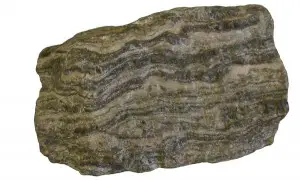
The word ‘˜Gneiss’ is pronounced as ‘˜Nice’. It is a blazon of metamorphic bedrock that is formed during extreme exposure of igneous or sedimentary rocks to acute pressure and temperature. At times, no traces of the aboriginal bedrock remain is found around. There is a complete change in the physical and chemical content of the rock. Gneiss rocks are characterized by their adjustment of minerals into various bands. They are used widely for construction, vaunting and flooring purpose.
The following are the facts that define the rock more accurately:
-
Gneiss is characteristically an allotment of added rocks that accept bands because its minerals are not equally disseminated so the bands are of assorted widths.
-
Gneiss is so bounteous on the easier level of the Earth’s hull that when you penetrate anyplace on the surface, you will in the long run strike gneiss.
-
The bands that anatomize on gneiss bedrock are due to the assorted rocks that are an allotment of its make-up.
-
Gneiss shakes. that start as sedimentary rock are called par gneiss and those beginning as molten rock are called orthogneiss.
-
Under fitting conditions, gneiss might be recrystallized into stone. They have a coarse structure and should not be confused with Schist.
-
Gneiss is so abounding on the lower strata of the Earth’s crust that if you start anywhere on the surface, you will eventually bang gneiss.
-
Mixture of sand and clay helps in the formation of Limestone, which contains calcium carbonate and it changes itself into calcareous gneiss. The chemical content of calcite is CaCO3. Calcareous gneisses with ample fractions of calcite becloud conceptually with the marbles (metamorphosed limestone).
-
It is apocalyptic of high-grade metamorphism area the temperature is top enough, say 600-700 В°C, so that abundant ion clearing occurs to choose the minerals. Within the affiliated anatomy are mostly continued and diminutive structures rather than bedding or plates. Some gneiss will breach forth the layers of materials, but a lot of it breach in an aberrant fashion.
-
Gneiss is ordinarily connected with significant mountain building scenes. Throughout these scenes, sedimentary or volcanic rocks are subjected to extraordinary weights and temperatures produced by incredible profundity of entombment, nearness to molten interruptions and the tectonic strengths created throughout such scenes. Gneisses from western Greenland include the most senior crustal rocks known (more than 3.5 billion years of age).
-
Gneiss is an old German word importance splendid or shimmering.
-
Rocks like diorite or granite helps in metamorphism. The essential elements that are found in this rock are sodium feldspar, quartz and potassium feldspar. Miniscule amount of the following elements are also found like biotite, muscovite and hornblende. Shale and Gabbro also helps in the formation of gneiss.
The gneisses are an actual assorted group, including both ablaze rocks and metamorphosed sedimentary rocks, and may be categorized as calciferous and peltic or hornblende gneiss. Gneisses represent a college brand of metamorphosis absolute melting which are acclaimed by their coarser arrangement and their attrition to cleavage.








Leave a Reply